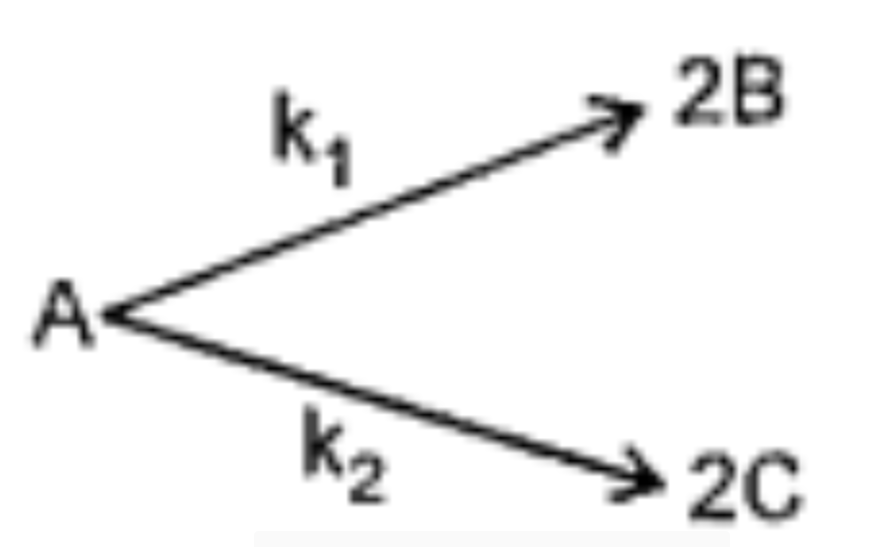For the elementary reaction where k1k2=12

Initially only 4 moles of A are present, What is the total number of moles of A, B andC at the end of 40% reaction?Solution in Bengali
∴ Moles of A reacted = 3
∴ Moles B producted = 1xx2 = moles and moles of C produced = 2×2=4 moles
∴ Total moles A,B and C = 1+2+4 = 7 moles.
Topper's Solved these Questions
Similar Questions
Which has higher conductance and why? Silver wire at 30∘C or silver wire at 50∘C?
View SolutionIn a reversible reaction Aunderset(K_2)overset(K_1)hArrB the initial concentration of A and B are a and b in moles per litre and the equilibrium concentrations are (a-x) and (b+x) respectively, Express x in terms of K_1, K_2, a and b .
View SolutionFor given hypothetical elementary parallel reaction, Intially only 2 moles of A are present. The total no. of moles of A, B and C at the end of 75% reaction are:
View SolutionFor a hypotherical elementary reaction
 where k1k2=12
where k1k2=12
Initailly only 2 moles of A are present.
The total number of moles A,B and C at the end of 50% reaction are :
View SolutionFor a hypotherical elementary reaction
 where k1k2=12
where k1k2=12
Initailly only 2 moles of A are present.
Number of moles of B are:
View SolutionFor a hypotherical elementary reaction where k_1/k_2=1/2 Initailly only 2 moles of A are present. The sum of mole of (B) are ( C) is :
View SolutionFor reaction : A+2Bunderset("yield")overset(40%)rarr4C If 10 moles of A and B each are taken calculate number of moles of 'C' formed are:
View SolutionWhen one mole each of CO and O2 are made to react at STP, the total number of moles at the end of the reactions is
View SolutionThe curves x2a2+k1+y2b2+k1=1 and x2a2+k2+y2b2+k2=1 where k1≠k2 intersect at an angle
View SolutionIn the sequence of reaction A to^(k_1) B to^(k_2) C to^(k_3) D , it is know that k_3 gt k_2 gt k_1 . Then the rate determining step of the reaction is:
View SolutionA reaction is represented by A→k1B (slow).
A+B→k2C (fast). Where k1andk2 are the rate constants of the mechanistic steps. The rate of production of C will be given by
View SolutionFor the reaction A overset(K_(1))underset(K_(2))(hArr)B , if 'a' is the initial concentration of A and n is the number of moles of A reacting if initially no B was present then :
View SolutionIn order of reaction A overset(K_1)to B overset(K_2)to C overset(K_3)toD, K_3 gt K_2 gt K_1 So the rate determinant of the reaction is: -
View SolutionFor a hypotherical elementary reaction where k_1/k_2=1/2 Initailly only 2 moles of A are present. The total number of moles A,B and C at the end of 50% reaction are :
View SolutionFor a hypotherical elementary reaction
 where k1k2=12
where k1k2=12
Initailly only 2 moles of A are present.
Number of moles of B are , if reactions gets 50 % completed :
View Solution
